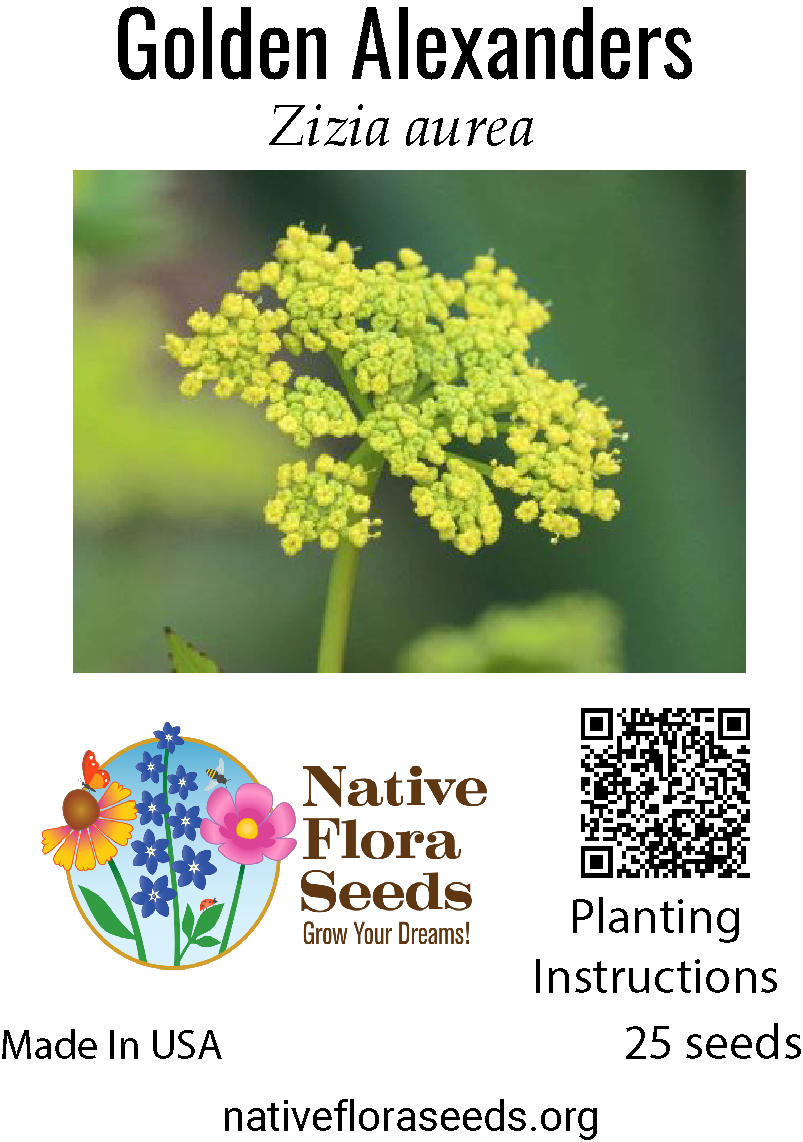Golden Alexanders
Planting Instructions
🌼 Overview of Zizia aurea (Golden Alexanders)
Native Range: Widespread in eastern and central U.S.
Life Cycle: Perennial
Height: 1.5–3 feet
Bloom Time: Spring to early summer (April–June)
Ecological Value: Pollinator-friendly (nectar source for bees and butterflies, including Black Swallowtail caterpillars)
🌱 Sowing Options
1️⃣ Direct Sowing Outdoors
Best Time to Sow:
Fall (ideal): Natural cold stratification improves germination.
Early Spring: Requires pre-treatment (cold stratification—see below).
Site Selection:
Sunlight: Performs best in full sun to partial shade (at least 4–6 hours of sun daily).
Soil: Adaptable to a range of soils — loamy, sandy, or clay.
Prefers moist, well-drained soil but tolerates occasional dry periods once established.
Soil pH: Neutral to slightly acidic (6.0–7.0)
Soil Preparation:
Loosen soil to a depth of 6–8 inches.
Remove weeds and work in compost if needed.
Good drainage is helpful but not critical.
Planting Depth:
Surface sow or cover very lightly (~1/16 to 1/8 inch) — seeds need some light for germination.
Watering:
Water gently after sowing.
Keep soil evenly moist until seedlings emerge (germination may take 2–4 weeks, or longer without stratification).
Once established, water during prolonged dry periods.
Stratification:
Yes – Cold moist stratification improves germination rates.
Recommended: 30–60 days of cold stratification.
Fall sowing provides natural stratification.
For spring sowing: Pre-treat seeds in moist sand/peat in the refrigerator for 1–2 months before planting.
Scarification:
Not necessary.
2️⃣ Starting Seeds Indoors (Spring Transplanting)
When to Start:
Start cold stratification 8–10 weeks before your intended sowing time.
Sow indoors 4–6 weeks before last frost date, after stratification.
Growing Setup:
Use trays or pots with a well-draining seed-starting mix.
Surface sow seeds or press lightly into the soil; do not bury deeply.
Provide 12–16 hours of light per day (bright window or grow lights).
Watering Indoors:
Keep soil consistently moist (not wet) using misting or bottom-watering.
Germination may take 2–4 weeks or longer.
Transplanting Outdoors:
Harden off for 7–10 days before transplanting outdoors.
Plant in full sun to part-shade location with moist soil.
🔧 Maintenance Tips
Low-maintenance perennial once established.
Will self-seed modestly in favorable conditions.
May spread slowly by clumping but is not aggressive.
Cut back flowering stems after bloom if you want to control self-seeding.
Good companion plant in native meadows or pollinator gardens.
Does not require fertilizer; excessive nutrients can lead to lanky growth.
🚫 Invasiveness
Not considered invasive.
Spreads in a balanced, garden-friendly way and coexists well with other native species.



